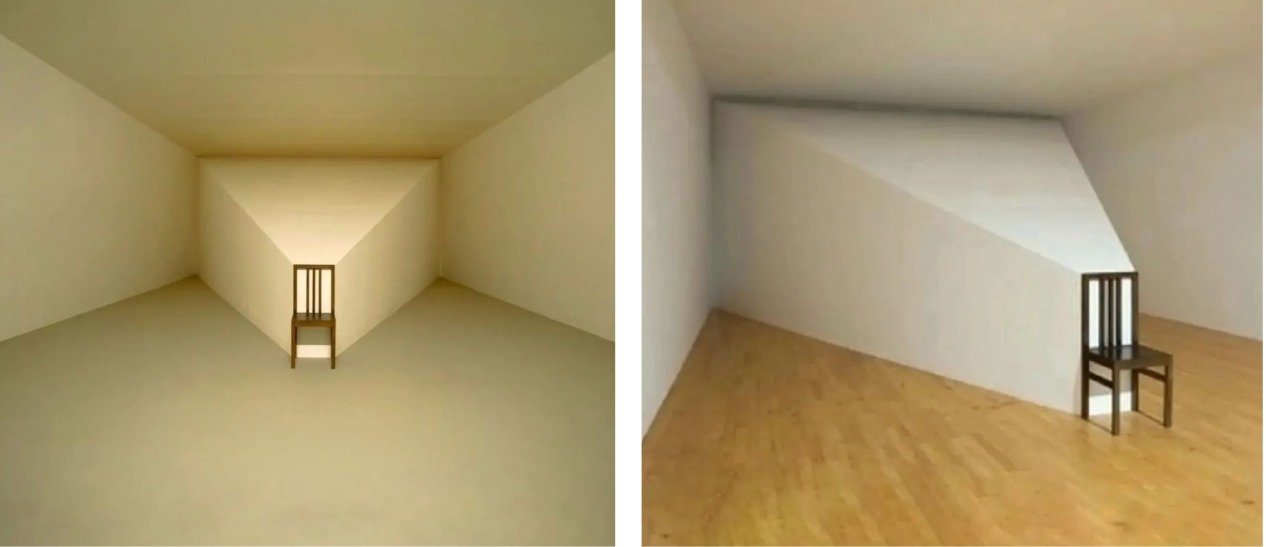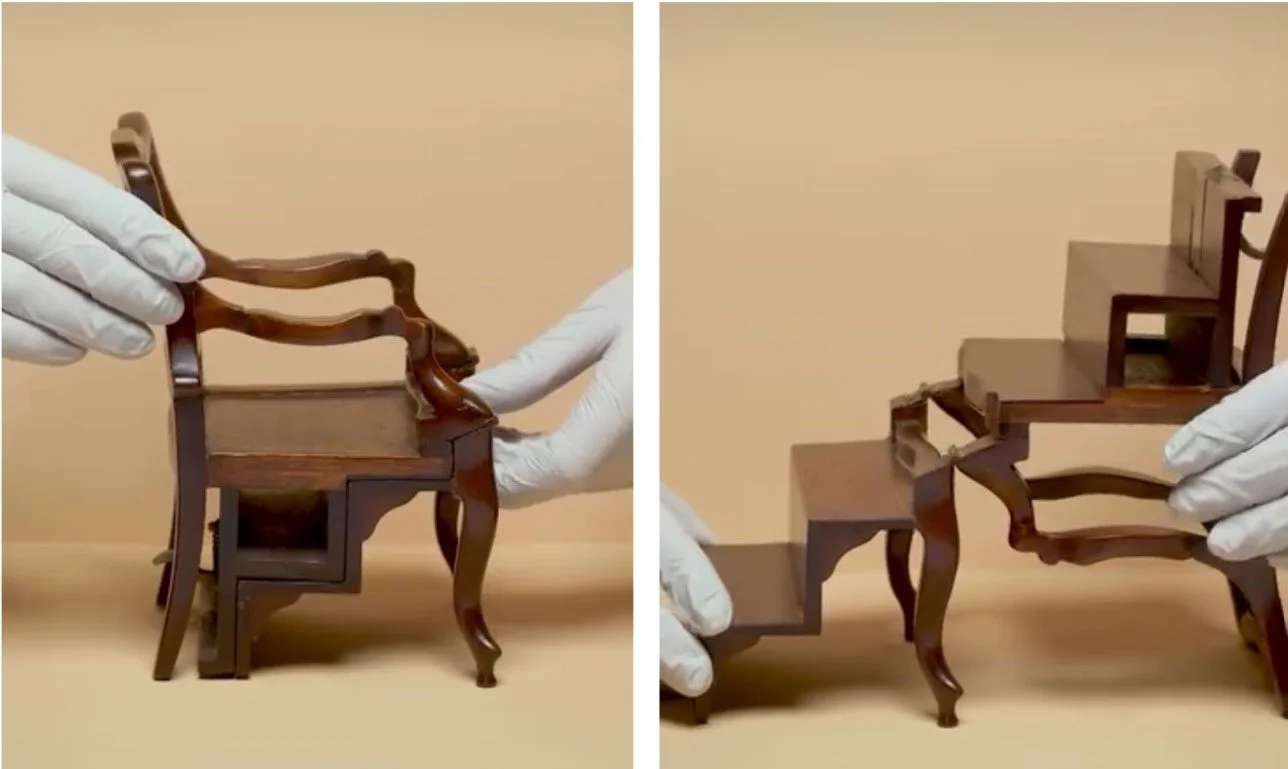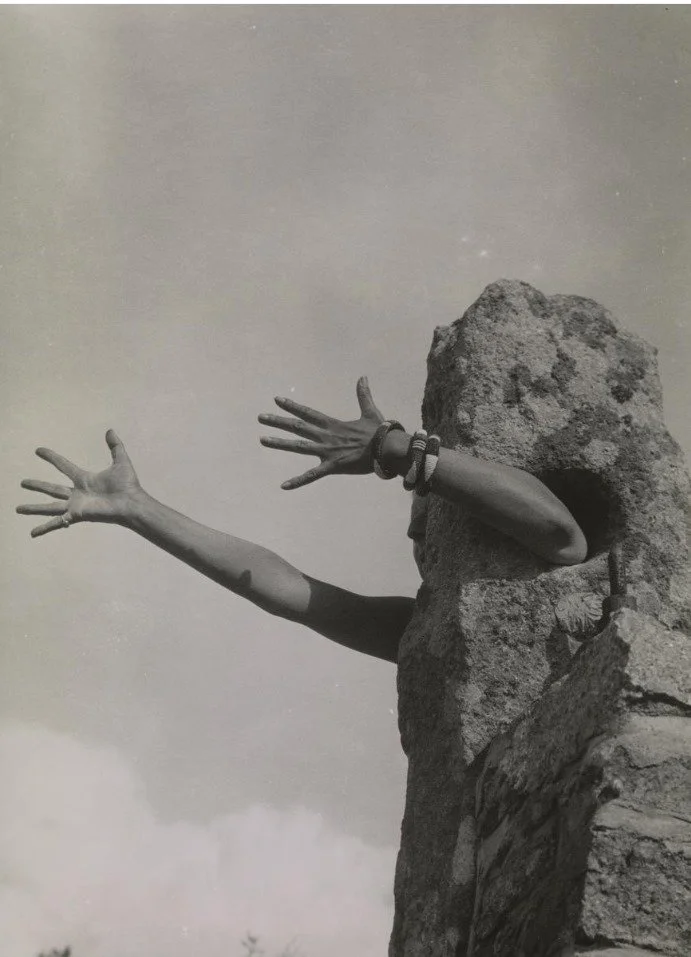BATLLE+Sig+____
As part of Speciwomen's 2024 Magnet Design Fellowship program, architect-designers Ana Batlle Cabral and Signe Ferguson collaborated on reimagining Speciwomen’s physical space, prioritizing adaptability, sustainability, and an ethos of care. In this conversation with Philo Cohen, they discuss their fellowship projects, including modular design solutions and participatory workshops that engaged the community. They also reflect on their broader practice—blending volcanic rock textures into modernist structures in Mexico City and co-designing spaces with local communities in the Dominican Republic. Their approach, rooted in storytelling and material innovation, reveals architecture as both a functional art and a cultural dialogue.
© Lucia Bell-Epstein
Philo Cohen: Can we start by introducing your collaboration and the origin of it?
Ana Batlle Cabral: We met in grad school at Yale. It was 2020, in the midst of the COVID pandemic. I remember I texted a couple of people from the class.
Signe Ferguson: Ana texted every single person in our class and was like, “I’m going insane and I need to speak to somebody.” Kind of an Ana Mendieta, Senal de Sangre No. 2, kind of energy.
ABC: Signe invited me over for dinner. I started cooking and reading books with her, and we became close friends. Because the school was closed down, we made our studios within our homes. Domesticity and work became one of isolation.
SF: It was very punk. We felt like we were Gertrude Stein and the guests of her salons at the same time. One day my apartment would be a set design and the next day Ana’s would be a ceramics office. In a great way, we never thought that we were going to work together or start BATLLE + sig. Our experiments started fully as friendship and adventure. Thanks to convergent evolution, we both always take things too far. Our imaginations can’t help it. We filled the Yale Gallery in Rudolph with sand, set off a fire alarm with a sound performance, and wrote a Guerrilla Girl’s style letter to the administration. We were idiots.
PC: What came after that?
SF: Some incredible travel studio opportunities at YSOA. We water-colored on the sidewalks of Rome together, explored domesticity in Mexico with Tatiana Bilbao, and went to Greenland with Billy Flemming to study mining and mineral extraction.
ABC: I think that was a moment in time that really brought us together. We were in the middle of a sublime landscape, trying to understand what we were looking at and how to process it. It felt very Gabriel Garcia Marquez. We followed a dog and ate Narwal with a local on our last day. It was surreal.
SF: Prospected land is even spookier than a mine. It's not an open wound. It's a scar that you know will appear. How can one reconcile that? How is it that there is so much commonality between a small town of 70 in Greenland and the rest of the world? We realized that far can be near.
ABC: We have this saying, “si a todo”– “yes to everything.” Let’s bring it in, let’s explore, let’s research. I think that that’s what makes us get closer every time, the curiosity and excitement about the unknown. I think our goal is a bridge between the DR, New York, and the rest of the world.
SF: We’re both trying to nourish each other’s brains so that we can protect each other from a lot of the falsehoods that many designers, artists, and architects start to drink in as a reality of life. One is protecting the way the other thinks, and works. We have to. It helps to move slowly and quickly. We reference Agnes Denes’ work often, and 50-year-projects don’t scare us.
PC: One of the things that drew me most to working together is that you had this sort of way of thinking that I’ve personally always gravitated towards where you gather resources from literature, cinema, and a sort of comprehensive history of design and visual culture. Yet it’s not limited to that. I saw how open to multiplicity you were. I think that’s unique; it was so well woven into your presentation and our conversations.
ABC: We appreciate that you noticed that. It definitely is rooted in some of our first hangouts - Signe’s apartment in grad school was filled with mountains of second hand books, and the most miscellaneous set of objects you have ever laid eyes on. Bike wheel - check. Tomato plant - check. Collection of rocks - check. The apartment was basically just a floor and a thick carpet, so we’d spread out books with a cup of tea and have conversations. This is still our process when we start a project. With Speciwomen we started with Botero, Maya Angelou, and Sol Lewitt, before drawing any plans. And remembering how nice it was to spread out with 1 book or 10. It’s not about a blank sheet.
SF: I think maybe what you’re reading, Philo, is that BATLLE + sig is kind of not-architecture, but we are at the same time. Gordon Matta Clark’s ideas of ANarchitecture & Schrodinger’s Cat are go-to references for us when trying to define our practice. It’s always us, + someone or something else. Then research + process. Nothing is an accident. If we show you something drawn on a cocktail napkin, it is because that restaurant has a history that pertains to the project. If we show up to a meeting with dirt from the site and the smell of pine, it's because we need you to feel the land with us.
ABC: Almost every project of ours explores irony in some way - using an everyday material that isn’t normally appreciated, questioning sacred ritual versus corporate capital, or for SPECIWOMAN examining the idea of black dyes as censor or ink. We want projects that local realities produce, but it has to be good at the end of the day. Not just a concept or question. But something real.
Reference images shared by Batlle Cabral and Ferguson as part of their fellowship proposal.
PC: How do you find that the process translates depending on where you are, where the projects are? How does place affect your process?
SF: Place affects all of our projects. The fashion show set design in New York for Zephrina was made out of raw building insulation responding to classic New York gallery-typology. We kept to Soho’s history with references of Judd, Warhol, and de Maria. It involved close work with Ximena Prieto (director of the performance) and thinking more about theatre and dance than architecture. The fashion show was totally different from the ranchero hand-cut stone facade we’re doing in CDMX - which is totally different to a communally built off-grid home made of recycled roof tiles that we are developing outside of Puebla City. Place is the materials, the people, the speed. Multiplicity is the essence of BATTLE + sig.
ABC: When you order and buy generic things that don’t make sense, you end up carrying this invisible chain. Not just of carbon and of labor but also chains of objects and techniques that are headless and exist without grounding. Signe and I don’t believe in existing in a siphon; you have to do a Bildungsroman. You have to go through an Odyssey and leave home, ask some questions, and come back. There is a hope for BATLLE + sig to have a permanent space in the Dominican Republic, in the style of Anna + Lawrence Halprin.
PC: When you say there’s that place in the DR that’s an education place and an archive, would that mean both of you being there?
SF: Yes, but always staying between places. We have a hallucination of a hybrid of Black Mountain College and a design-build firm. It’ll entail us being there physically. The Dominican Republic is an extremely fascinating part of a wildly complicated shared island (with Haiti). I’m lucky Ana brought me to her home. Ana’s relationship with the Dominican Republic [DR] has likewise seeded its importance in the practice.
ABC: The Dominican Republic is also your place..There is so much potential in the Dominican Republic, and Signe has been learning about that. Its not just about being in the DR. Its going there, and elsewhere, and back and forth. Mexico. The DR. NY. CA. FR. HTI. That’s what BATLLE + sig is. It's our place - home in the DR and Mexico, for now, but between us always.
SF: For us, everything is a research project and an art piece. Acts of architecture are always climate metronomes. The work of Francis Alys inspires us a lot, and convinces us that architecture is not just meant for architects, and place means everything.
PC: Hearing you speak is also like a love letter correspondence, or like a marriage; it’s really beautiful to see. I would love to keep talking to you down the line about research and those discoveries that you’ll make by being more in the DR because I think that would make a really good book. There are a few books we have here [at the Speciwomen Library] that talk about architecture and design from a non-Western point of view, but I find it still quite limited, especially about women researching topics, so I would love to keep talking about this.
ABC: Signe and I have been discussing the idea of the archive in depth. Humans are lint collectors. Multiplicity creates memory vessels, that future generations need. We’d love to learn more from the new forms of archive you are uncovering at Speciwomen, and show you some of the stranger things we’d like to explore in archiving ourselves. Signe has been dying to go to this museum in Iceland that is a memorial to glaciers that have gone extinct.
SF: Ana is desperate to visit theTower of Silence in Mumbai, and explore what physical archives of death mean. Architecture has much to do with conversation of archives, and is a form of archive. Everything is if you zoom in and out. Seed is archive. Forest is archive. Amitav Ghosh says that if you split nutmeg in half, you’ll find a map of the earth inside. The diligence of an archive is not just noticing, it's considering out to preserve. Ana has been working for the past few years on a project collecting myths and mystical stories from the DR, and considering what representation means for primarily oral stories, that could make for an amazing book.
PC: It’s interesting to think about this question somewhat at the beginning of our lives, right? It is interesting to think of everything as an archive. To start building an archive is to start kind of landmarking for yourself, process, and practice. I think books are amazing as substantial landmarks, and they can be seen as stepping stones. They can be made about different focuses, or they can be marking time in one’s research. It is all about the tools you’ve developed being vessels, and you have that with WhatsApp I feel for example. We are a digital generation, although I know how much emphasis you both put on physicality. It’s interesting though that we’re living in this day and age where we can keep track with technology.
SF: Collaboration can mean even more today than it used to with things like Zoom and Miro. BATLLE + sig is always fighting to be physical, but technology, data driven research, and using tools the wrong way aren’t excluded. I’m a reformed luddite. We wouldn’t be able to work together, nor with all of our friends, if it were not for our digital epoch. Nabil Haque, a Bengali architect living in Berlin, is helping us out with the stone facade in CDMX. We’ve got another friend, Andrea Sanchez Moctezuma, a Mexican architect and archivist, living in LA helping us with some research too. Time zones can be a battle, but they also give us natural pauses and time to think alone.
ABC: Yes, the project with Andrea is super exciting. It is called ARCHIVO LATINO. We are starting with situationist style exercises, and type-written letters across our network of latin friends living in Latin countries,responding to questions about planned precariousness, and why you can find a CMU block in most rural contexts.
SF: It began with Andrea’s thesis research at yale, but has turned into a Miroljub Todorović style Signalist Exploration of mail art. Its important to say technology makes it way into BATLLE + sig’s art quite often. There was a water study I started in school under Dana Karwas, that we are re-examining. It involved taking a collection of thousands of photos of a coastline and running them in MAX. The result was a Monet-esque painting that somehow evoked all the ideas of a changing water pattern that a graph would.
PC: How does this versatility affect your design of Speciwomen’s headquarters?
SF: Speciwomen’s space was a great moment for us to consider the floor and the table and the book, and zoom in on the body. Einstein’s Dreams is a book where in each chapter there's a different world, and in each world there is a different relation between space and time . It's a useful analogy for the micro-environment that is Speciwomen. You expressed to us the multiplicity of the space, and the kinds of verbs you’d like to experience. We went from there.
ABC: We went on a bit of a personal journey exploring book binding, paper, and the act of inking. Signe produced experiments of graphite rubbed wood, and ink soaked ply. We zoomed into the comma, and started exploring the body. “How wide do we want this table to be?” The table needed to be thinner for more intimacy - to make it easier to lean in for a good sobremesa. We think about verbs instead of the adjectives. We want people to speak, lay, express, read, eat, perform. Your brain should look like one of Ivan Tovar’s paintings. Paris Venture did physical production and figured out how to make and install on a tight timeline and budget. It took a village.
© Lucia Bell-Epstein
PC: I’m so glad we had collaboration through this fellowship. I wanted a space that would bring that to New York, to artists coming to New York as well as the creative community here. The furniture you have created is boundless and multiple in the way that it can hold experience for one to many people, sharing time in a space together, in the most impactful way, beyond what I could have imagined.
ABC: I have to say, we’re both so happy that we were able to make this invisible city in your domestic realm. We’re trying to create networks of care, condition, and creativity, just like Speciwomen
SF: It’s relieving to know that other people also want to be a little extra tired and do the inconvenient work to make sure that the genuine can prosper. Thank you for letting us explore. I saw a piece the other day by Damien Ortega that is a flurry of rebar that you almost don’t notice is an alphabet of his mothers handwriting. We hope Speciwomen embodies the work with a similar sense of memory.
PC: I want to tell people how they can reach you and collaborate with you. What is the best place to direct people right now?
@batlleandsigand on Instagram







